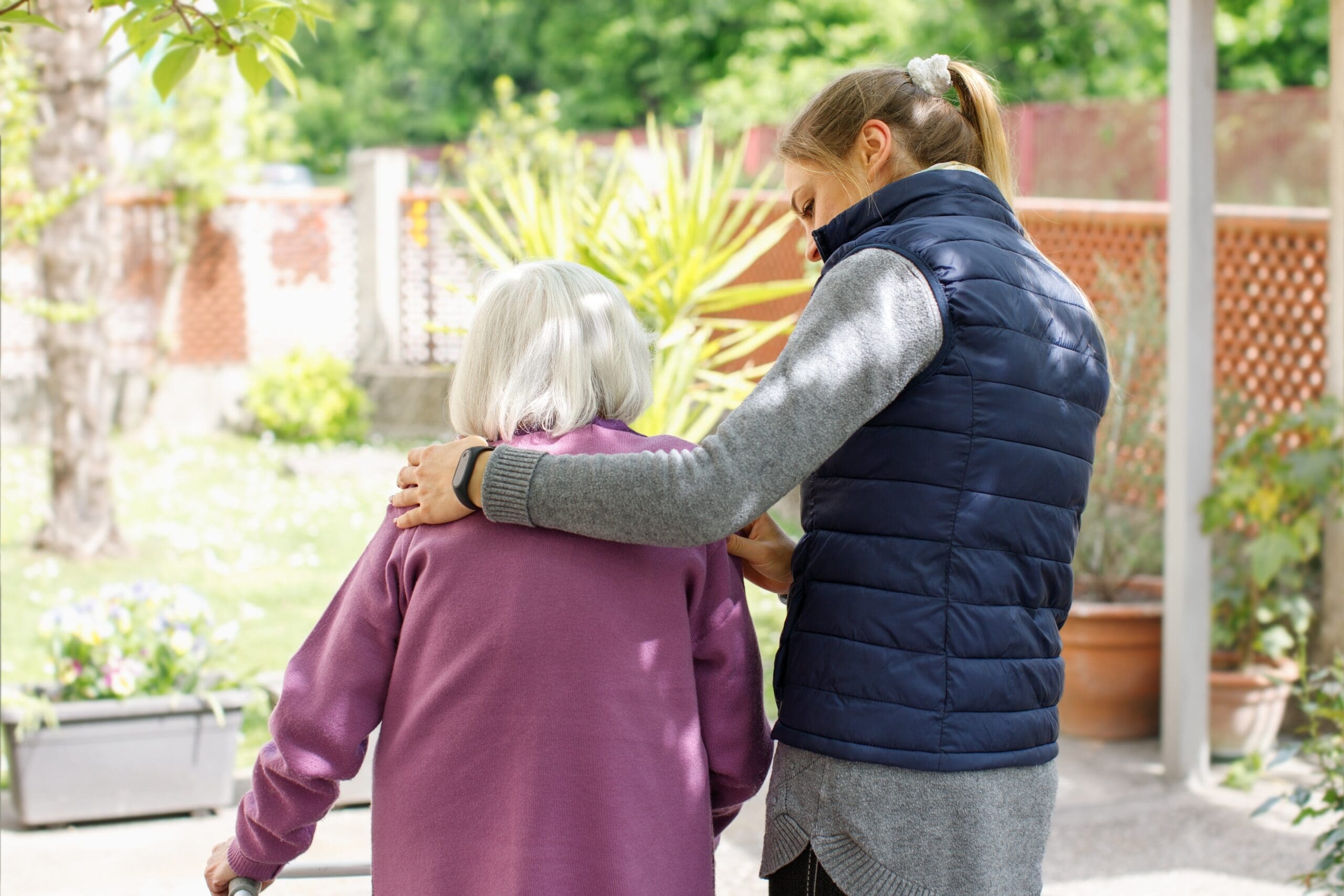Elderly Caregiver CV Guide
Everything you need to know about getting the perfect Elderly Caregiver CV
Are you looking for a new role as an elderly caregiver? If so, you will need a well-crafted curriculum vitae (CV) to stand out from other candidates. Whether you are writing a CV for the first time or refreshing an existing one, you will need to write it in a way that captures the interest of potential employers.
Employers use CVs to assess candidates’ suitability for the role they are hiring for. For an elderly caregiver position, they will look for individuals with specific personal qualities, such as compassion, empathy, honesty, patience and flexibility. They will also look to see whether candidates have relevant qualifications, skills and experience in caregiving.
When writing your CV for an elderly caregiver position, you want to emphasise your most relevant training, skills, experience, achievements and attributes and tailor the content to align with the job description. You should also ensure your CV is professional-looking, concise and error-free to create a good impression.
In this article, we will provide guidance on how to write an elderly caregiver CV, what to include, some tips and an example to help you get started. It will hopefully increase your chances of securing an interview and, ultimately, the job.
In this Elderly Caregiver CV guide
What to include in a Elderly Caregiver CV
Writing a CV for the first time or updating an existing one can feel daunting, but it is simple once you know what to include. Most CVs have similar sections – contact information, professional summary, education, work experience, skills, achievements and references. These headings give you a framework for your CV, and you can focus on one section at a time.
Once you have decided on your CV design, layout and structure, you can start thinking about the content to include. You will want to tailor your CV to the specific elderly caregiver position, so carefully read the job description and note the qualifications, skills, experience and qualities mentioned. You can then reflect on your background and see where it aligns with the employer’s requirements.
The first section of a CV is usually for contact information, and it is probably the easiest to start with to help you get into the flow. Let us look at this more and see what you can include in other sections to craft a CV that shines.
Contact information
Your contact information section is at the very top of your CV, in the centre or at the side of the document. Here, you provide clear and concise contact details to enable potential employers to easily contact you for further information or to invite you to an interview.
When crafting the contact information section of your elderly caregiver’s CV, here is what to include and what to avoid:
- What to include
- Full name – your first name and surname are sufficient.
- Location – include your town, city and/or county.
- Phone number – add a reliable number where employers can easily reach you. If you have a voicemail, ensure it sounds professional.
- Email address – use a simple, professional email (e.g. firstname.lastname@email.com). Avoid adding one that contains overly casual or silly names.
- LinkedIn profile (if applicable) – if you have a professional LinkedIn profile, you could include the link.
- What to avoid
- Full home address – for privacy reasons.
- Personal identifiers – do not include your date of birth, national insurance number, marital status and other personal information.
- Photographs – CVs typically do not require a photo unless specified by the employer.
- Multiple phone numbers or emails – stick to one reliable phone number and email to avoid confusion.
- Personal social media links – unless they are relevant to your profession, avoid including them.
Professional summary
After the contact information, the next section is typically the professional summary. You may also come across other names for this section, such as personal statement, career summary, professional profile or executive summary.
A professional summary is a brief, compelling 3-5 line introduction at the top of your CV where you highlight your qualifications, experience, skills, and achievements relevant to the elderly caregiver job you are applying for. It is a snapshot of your background, helping employers quickly assess your suitability.
Crafting an engaging and strong summary is crucial, as it is usually one of the first things employers will read when skimming CVs, and it sets the tone for the rest of the document. If it captures their interest, they will likely want to read through the rest of your CV. It is your first opportunity to create a positive impression.
So, how do you write your professional summary? You should customise it to the specific job you are applying for, and here are some elements you may want to include:
- Current or previous job title – you can include your role at the start, e.g. “Elderly caregiver”.
- Years of experience – mention how long you have worked in elderly care.
- Certifications and training – if you have relevant qualifications like NVQ in Health and Social Care, the Care Certificate, First Aid or Manual Handling, include them.
- Core skills – highlight key skills such as personal care, companionship, medication management, dementia support, mobility assistance, etc.
- Personal qualities – emphasise essential attributes needed to work in caregiving, such as compassion, empathy, active listening and patience.
- Personal touch – express your dedication to supporting the well-being and dignity of elderly individuals.
- Career goals – you can include your career goals in your professional summary to help showcase your ambition and dedication to elderly care. You could mention if you want to advance your skills or responsibilities in the care sector.
Here is an example of a professional summary for an elderly caregiver:
“Compassionate elderly caregiver with 5+ years of experience providing dedicated support to seniors. Skilled in personal care, mobility assistance and dementia care. NVQ Level 3 qualified with expertise in medication management and safety protocols. Passionate about fostering dignity, independence and meaningful companionship. Committed to continuous learning and enhancing the quality of life for those in need.”
Education
Your CV should include your education, which you can add after your professional summary or work experience. If you have limited experience as an elderly caregiver, you may want to emphasise your training and certifications and add your education section first.
A well-written education section is essential, as it enables employers to see whether you have the knowledge and competency to fulfil the job’s responsibilities and allows them to gauge your suitability for the role.
Your education section should highlight any training or qualifications demonstrating your ability to provide competent, person-centred, compassionate care to older adults. Here are some examples of what you can include:
- Degrees or diplomas – if you hold formal qualifications related to healthcare, nursing or social care, list them. Examples include a diploma in Health and Social Care or a degree in Nursing.
- Certifications – include relevant courses such as the Care Certificate, first aid and CPR certification, manual handling training, infection control or safeguarding adults.
- NVQs or SVQs – include the level you attained if you have completed a National Vocational Qualification (NVQ) or Scottish Vocational Qualification (SVQ) in Health and Social Care. You could also add apprenticeships where relevant.
- Additional training – you could add any training in dementia care, palliative care, medication administration or any other specialised training.
- Institution names and dates – include where you studied and the years you completed your qualifications or training.
You can include GCSEs, T-Levels and A-Levels (or equivalent) if you do not have higher-level qualifications and/or the job posting mentions them. Here is how you can structure them:
XYZ College, London (2022)
A-levels: Biology (A), Psychology (B), Sociology (B).
ABC High School, London (2020)
10 GCSEs (Grades 9-4), including English (9), Maths (7), Science (7) and Health & Social
Care (9).
Work experience/employment history
You can add your work experience before or after your education section. If you have more experience than education in caregiving, you may want to focus on this section first.
In the work experience section, you should showcase your previous jobs, responsibilities and achievements, demonstrating your professional background and skills. It is a crucial section, as it shows employers you have relevant practical experience and allows them to see what you have done and how you have performed.
You should include your previous jobs that relate to elderly caregiving, whether you have already been working in this field or have developed transferable skills in other roles. Also, remember to tailor the information to the specific job you are applying for. Here is an idea of what to add (in reverse chronological order – most recent first):
- Job titles – include the names of the positions previously held, e.g. “Elderly Caregiver”.
- Company name and location – add the organisation you worked for and where you worked. If working for an agency, list the agency name. If directly for a private client, you can write “Private Client” for privacy, or a brief description if appropriate, e.g. “Care for a private elderly client with dementia”.
- Dates of employment – include the timeframe you worked there, e.g. month/year or present.
- Key Responsibilities and achievements – add a brief description of your duties and any notable contributions. You should include 3-5 examples in bullet point form and start each one with an action verb where possible, e.g. “Assessed”, “Supported”, “Administered”, “Increased”, etc. Try not to list only duties – focus on quantifiable achievements where possible.
Here is an example of how to structure your work experience:
Caregiver. XYZ Senior Care Home, London. January 2020 – present
- Assisted elderly clients with daily living activities, ensuring a 98% satisfaction rate in client feedback surveys.
- Provided companionship, emotional support and physical care to elderly clients.
- Reported any changes in the client’s health or wellness to supervisors.
- Assisted with administering medication and ensuring proper dosage.
- Prepared nutritious meals and performed light housekeeping duties.
Key skills and achievements
A CV should contain relevant key skills, which are abilities that help you do something well, and you can develop them during education, work and in your personal life. They are a crucial addition to your CV, as potential employers will look for candidates with a specific skill set to fulfil the responsibilities of the elderly caregiver position.
When adding skills to your CV, you should identify those listed in the job description, which are likely hard and soft skills.
- Hard skills (technical skills) are measurable and job-specific abilities that can be taught or trained. Some examples for an elderly caregiver include personal care assistance, mobility support, medication management, meal preparation and nutrition, food hygiene, health and safety, first aid and CPR, safeguarding, infection control and recordkeeping.
- Soft skills (interpersonal skills) are personal attributes that help caregivers build relationships and provide compassionate care. Some examples for an elderly caregiver include empathy, patience, resilience, communication, teamwork, time management, adaptability and trustworthiness.
Add a blend of relevant hard and soft skills to your CV in bullet points. Try to use similar language mentioned in the job posting, as many organisations use Applicant Tracking Systems (ATS) to screen CVs – it will help you pass these filters.
You can include your key skills in your work experience section and weave them into your duties, or you can have a separate one titled “Key Skills” or “Skills & Competencies”. You could also combine them with your achievements, which are specific accomplishments that showcase your impact and contributions in previous roles. We will look at achievements in further detail later.
Other information
The main sections we have covered so far are typical in most CVs. However, you may see some examples with other sections and information, which is fine. Your CV is unique to you and your background, so if something does not quite fit into a section or you want it to stand out, do not be afraid to add additional headings. Here are some examples you could consider:
- Certifications and training – you could keep your education section for more formal qualifications, such as GCSEs, A-Levels, Diplomas and Degrees, and have a separate one for any additional courses, workshops and online training you have attended.
- Volunteering experience – if you have limited paid experience in the care sector, you could add any volunteering related to caregiving to the work experience section or have a dedicated one. Add the name of your volunteering role, the organisation, dates and your responsibilities (in bullet point form).
- Professional memberships – if you are part of any care-related organisations, you can have a section to list them, e.g.:
- Registered with the Health & Care Professions Council.
- Member of the National Association of Care and Support Workers.
- Languages – if you speak multiple languages, it can be an asset in caregiving. You can add them to your skills section or have a separate one. Add the language and proficiency level, e.g. basic, conversational or fluent.
- Hobbies and interests – this section can personalise your CV and show your ability to connect with clients. For example:
- If you enjoy reading, storytelling or puzzles, this can be great for engaging elderly clients.
- If you are passionate about gardening, it can be useful for outdoor activities with residents.
- If you contributed to care-related research, blogs or initiatives, it can demonstrate a passion for improving people’s lives.
- Testimonials – you could have a section detailing positive feedback or testimonials from clients or families. You can even add a quote.
You do not have to add other sections and should only do so if they add value to your CV. If you include additional ones, be mindful not to include too many. Otherwise, it can make the document look cluttered.
References
The last section of a CV is for references. Here, you should provide details of 2-3 individuals (referees) who can vouch for your skills, experience, work ethic and character to potential employers. They should be people who know you professionally, such as a previous employer, manager, supervisor or colleague. If you have limited work experience, you could choose someone from your education or training, such as a teacher, lecturer, tutor or mentor.
Having strong referees is crucial, as they can validate the information you have provided on your CV and reassure employers that you have the capabilities to meet the requirements of the role. Recruitment can be expensive, so they want to ensure they choose the most suitable candidate who is the best fit for their organisation.
So, how do you complete this section? First, look at the job posting to see if they have requested specific referee details. If they have not, you can add a statement, “References available upon request”. If you are required to add references to your CV, ask your referees for permission first and once they agree, include the following information:
- Full name – their name and title.
- Job title and organisation – their role and where they work/worked (e.g. Senior Manager, XYZ Care Home).
- Contact details – email and phone number (ensure they are current).
- Your relationship – how you know them (e.g. Former Manager or University Tutor).
Tips for writing an Elderly Caregiver CV
While we have covered some of the main sections in a CV, it is also crucial to make it as eye-catching as possible and ensure it is well-written, clear, concise and error-free. Here are also some general tips to follow when putting your CV together:
- Tailor your CV to the job – customise your CV for each elderly caregiver role by matching your qualifications, skills, experience and personal qualities to the job description. Use keywords from the job posting to pass Applicant Tracking Systems (ATS).
- Keep it clear and concise – employers often have limited time to review all the CVs they receive, so ensure it is clean, easy to read and ideally no more than two pages. Only include information relevant to the specific job, and try not to cram every little detail of your education and job history into the document.
- Always be honest – never exaggerate on your CV and always be truthful, as employers are likely to check and lying can have serious consequences.
- Use action verbs – use action verbs throughout your CV to make it more impactful. Some examples include assisted, provided, administered, supported, monitored, prepared, facilitated, improved, etc. Avoid phrases such as “hardworking” or “team player”, as these are overused and lack specificity.
- Use professional and consistent formatting – you can help your CV stand out by:
- Using a clean, professional layout with clear sections, headings, margins and bullet points. Avoid long paragraphs.
- Using professional, simple and clear language, avoiding slang, jargon or overly casual expressions.
- Avoiding personal pronouns for a cleaner, more professional tone.
- Using the same tense throughout your CV. Typically, the past tense is used for previous jobs, and the present tense is used for your current role.
- Avoiding excessive use of fancy designs, colours and fonts.
- Sticking to a simple font like Arial, Calibri or Times New Roman and consistent size, e.g. 10-12 points.
- Ensuring your CV has adequate spacing to make it more visually appealing.
- Avoiding using personal photos, as it can distract and lead to bias.
- Using a digital format where possible. Save and send your CV as a PDF to ensure the formatting stays intact when viewed on different devices.
- Proofread thoroughly – check for spelling and grammar mistakes, as errors can distract from an otherwise impressive CV. You could use online tools to help and ask a family member, friend or colleague to review your CV and provide feedback.

Focus on achievements
We have mentioned achievements a few times already, and it is because they are essential on a CV. Instead of just listing duties, achievements demonstrate your skills in action, prove your ability to deliver results and show employers how you have made an impact in previous roles.
Focusing on your achievements effectively on your CV can make it more engaging, as employers like to see results. It can also differentiate you from other candidates who have just listed what they did rather than describing how well they did it.
You can include your achievements in various places within your CV. You could weave them into your work experience and add them as bullet points. Alternatively, combine them with your skills or have a dedicated section entitled Achievements” or “Key Accomplishments”. Wherever you add them, here are some pointers on how to focus on them:
- Identify your most impressive achievements – reflect on your education, training, previous jobs, extracurricular activities or hobbies and think about what you have achieved that can relate to the specific elderly caregiver role. Ask yourself:
- Did I improve efficiency or processes?
- Did I help someone or make a difference?
- Did I receive recognition or awards?
- Did I solve a problem or take initiative?
- Quantify your achievements – use numbers to demonstrate your impact, for example:
- “Supported 80% of residents improve independence through mobility training”.
- “Assisted elderly clients with daily living activities, ensuring a 98% satisfaction rate”.
- “Provided companionship, leading to a 30% reduction in reported loneliness”.
- “Trained five new caregivers, improving team efficiency”.
- “Received ‘Employee of the Month’ three times in 2024”.
- Use strong action verbs – include action verbs in your achievements, e.g. Assisted, provided, implemented, improved, enhanced, etc.
- Use the STAR Method – use STAR (Situation, Task, Action and Result) to structure achievements.
- Situation – what was the challenge? ” Several residents struggled with mobility, leading to frequent falls and injuries”.
- Task – what was your responsibility? ” Tasked with improving mobility support and reducing fall incidents among elderly residents”.
- Action – what did you do? “Introduced a daily mobility exercise program, tailored to individual needs, and trained staff on proper assistance techniques”.
- Result – what was the outcome? “Within six months, fall incidents decreased by 30%, and residents reported improved confidence in movement”.
Focusing on your impact rather than just stating what you did in previous roles can make your CV stand out and increase your chances of getting noticed by potential employers.
Describe your experience
The experience section on a CV showcases your work history, including jobs, apprenticeships, internships, volunteering and relevant projects. It helps employers understand your skills, responsibilities and achievements in previous roles.
Describing your experience effectively on your CV is crucial, as it showcases your expertise and enables potential employers to assess your suitability for the specific elderly caregiver position. You should highlight your caregiving experience, such as personal care, medication management and companionship.
You will describe your experience throughout your CV, especially in your professional summary and work experience sections:
- Professional summary – as this is usually one of the first things employers will read when scanning CVs, your descriptions should be clear, concise and tailored to the job. You should describe your years of experience in the field or transferable roles, use action-oriented language and highlight your key skills, expertise and achievements.
- Work experience – you will describe most of your experience in this section, and it should include the most relevant previous roles. You should use a clear structure for your descriptions and add core information, such as job titles, companies, employment dates, key responsibilities and achievements. Start each bullet point with strong action verbs and match your experience to the specific requirements of the role.
If you are new to elderly caregiving and have limited experience in the field, do not worry. You can still create a strong CV by focusing on transferable skills, volunteering, relevant training and other areas. Here are some tips on how you can achieve this:
- Highlight transferable skills – even without direct experience, you may have skills from other roles that apply to caregiving. Therefore, include these in your descriptions, e.g.:
- Communication and empathy – from customer service or tutoring.
- Time management – from retail or hospitality jobs.
- Problem-solving – from handling difficult situations in past roles.
- Teamwork – from working together with colleagues to achieve goals.
- Include volunteering and informal experience – if you have helped family members, volunteered or assisted in community programs, it counts as experience.
- Emphasise education and training – if you have completed care-related courses, highlight them and your experiences, especially if you have been on placements or shadowed experienced elderly caregivers.
- Add hobbies, interests and extracurricular activities – if you have developed knowledge and skills outside of education and work, you can describe these experiences. Examples relevant to elderly caregiving include volunteering, fundraising, creative hobbies, fitness and wellness, languages, reading, playing games, music, gardening, etc.
- Write a strong professional summary – express your dedication and passion for the role by tailoring your professional summary. Here is an example:
- “Compassionate and dedicated individual eager to provide high-quality elderly care. Skilled in communication, patience, and emotional support. Trained in basic first aid and committed to ensuring client well-being. Experienced in assisting family members and volunteering in community care. Passionate about creating a safe and comfortable environment for older people”.

Tailor your CV to the Elderly Caregiver position
Tailoring a CV means customising it for a specific job to highlight the most relevant qualifications, training, skills, experience and achievements. Instead of using a generic CV, you adjust it to match the job description and the employer’s expectations.
When you tailor your CV to the specific elderly caregiver position, it demonstrates to employers that you have taken the time to understand the job and the organisation’s needs and that you are genuinely interested. It can also make your CV more noticeable and help you stand out from candidates who have sent generic CVs.
The first thing to do to tailor your CV is to thoroughly read the job description to identify the key qualifications, skills, experience and attributes mentioned. You can then reflect on your background and add the most relevant details. You can also research the organisation and see what you could add to your CV. Check out the website, social media pages and testimonials to identify their values, ethos, goals and mission statement, and include similar language.
Once you have analysed the job and researched, you should tailor each CV section. Here are some ways you can do this:
- Professional summary – use keywords from the job posting and mention how your skills and experience match the role. You can also include the job title and/or company name.
- Education – if the posting asks for specific qualifications, training and certifications, include them where relevant.
- Work experience – include your previous roles and achievements that align with the elderly caregiver job, whether you have already worked in elderly care or in jobs where you have developed transferable skills. Try to include some of the same language from the job posting.
- Skills – note the hard and soft skills mentioned and adjust this section to match. For example, if they are looking for someone to administer medication, highlight your proficiency in this area.
- Other sections – if you include additional sections, ensure you tailor them to the role.
If the job advert requests a cover letter with your CV, do not forget to tailor it to the specific role. Ensure it ties in with your CV and references the role, company and individual mentioned in the job posting.
It is important to note that tailoring your CV does not guarantee an interview invite or a job. However, it can significantly increase your chances of success, especially when it is well-written and paired with a strong cover letter. Making an effort to craft a CV that demonstrates passion and attention to detail can help you stand out from others and create a lasting impression with potential employers.
Good luck!



